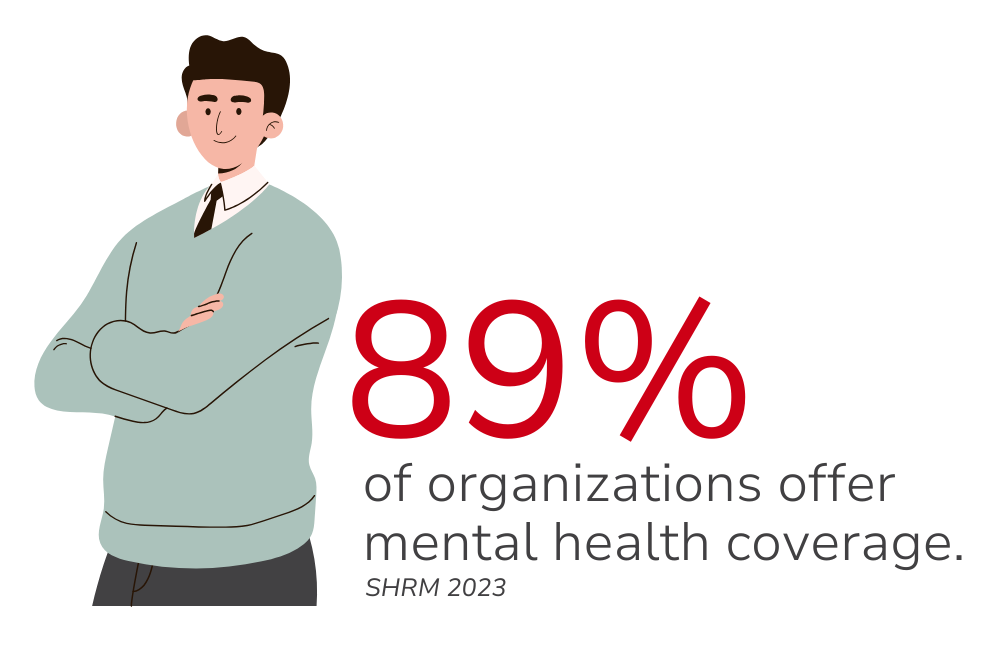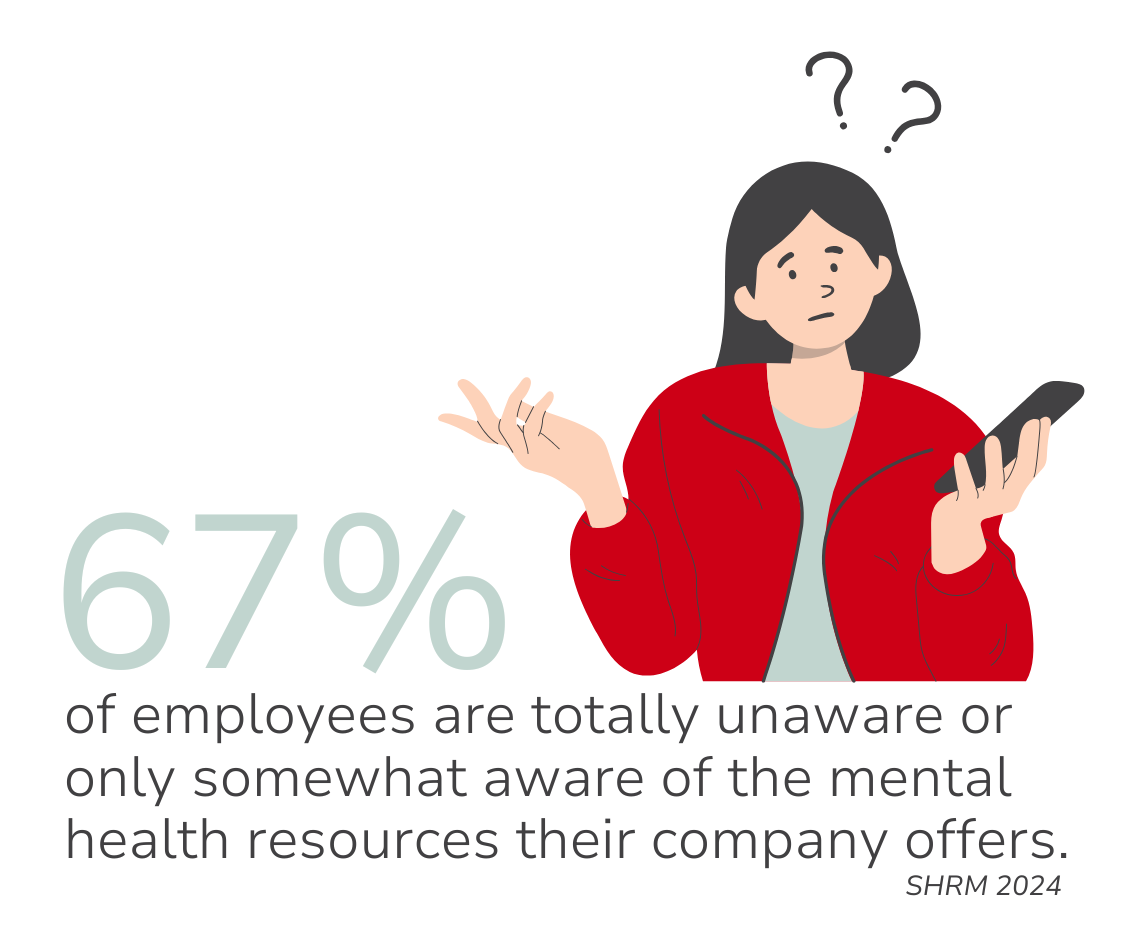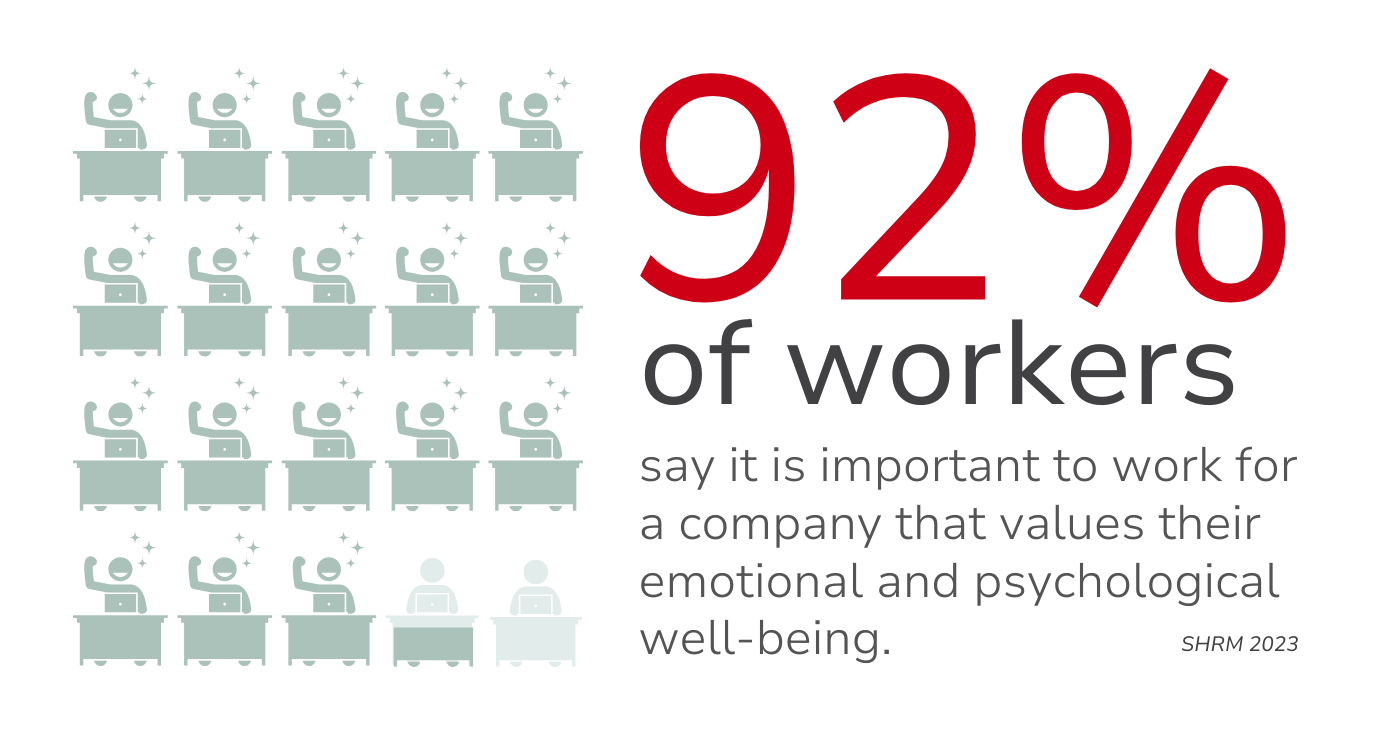Access Matters: Mental Health Benefits for the Real World
Offering mental health coverage is no longer optional. But offering coverage that goes unused, unmentioned, or misunderstood? That’s no better than offering nothing at all. When employees know support is available and how to use it, they’ll show up more focused and more likely to stick around.

In This Article
May is Mental Health Awareness Month, and across the country, businesses are sharing reminders, posting infographics, and putting up green ribbons. That’s a good start. But while the national conversation grows louder, the actual support people receive often lags far behind. We are getting to the point where awareness isn’t the issue—it’s access
According to the American Psychological Association, 67% of U.S. workers report having access to mental health care through their job. But only 28% say that care includes telehealth or virtual counseling. That’s a huge gap for a workforce that’s busier, more remote, and more digitally integrated than ever.
Shockingly, just 29% say their employer offers an Employee Assistance Program, a tool that should be basic by now.

While benefits might technically exist, they’re often invisible. Research by SHRM found that 67% of employees are either totally unaware or only vaguely aware of what their mental health options are. That’s a problem, especially when nearly a third of workers say they’ve considered leaving a job due to mental health concerns.
Meanwhile, 92% of workers say it’s important to them to work for a company that values emotional and psychological well-being. Something is not adding up. At Planstin, we believe benefits should actually benefit people. And when it comes to mental health, that starts with building support systems that people can reach, afford, and rely on.
The case for rethinking mental health access
Traditional mental health care often means finding a provider, waiting weeks for an appointment, taking time off work to attend, and hoping insurance covers most of it. For many employees, those steps alone are enough to delay or avoid care altogether.
Unfortunately, people are not likely to avoid feeling overwhelmed or wait to fit it into their schedule. They need options that fit into their actual, messy lives. This is when virtual care becomes much more than a convenience.

Remote-first mental health tools have evolved far beyond simple chat support or downloadable PDFs. The most effective platforms offer structured, science-backed courses tailored to common issues like anxiety, stress, parenting challenges, and relationship strain. Employees can explore these programs at their own pace, on their own time, without needing a formal diagnosis or a time slot they can’t spare.
Additional tools—like daily journaling, progress assessments, and weekly group sessions with licensed therapists—help turn casual engagement into meaningful growth. And all of it can happen from a phone, a laptop, or wherever someone feels comfortable.
This kind of design removes friction. It reduces stigma. And it helps more people take that first step, because it’s right there when they need it.
Building a culture that supports participation
Offering benefits is only half the job. The other half is encouraging people to use them or helping them remove the hesitation that might keep them from doing so.
Workplaces that reward participation send a clear message: mental health matters here. That could mean providing small incentives for engaging with mental health programs, giving employees time during the workday to attend sessions, or simply celebrating when people take steps toward well-being.
When support becomes visible and valued, it becomes part of the culture. And that culture pays off. Employees who feel emotionally supported are more focused, more inspired, and more present. They miss fewer days, collaborate better, and stay longer. Teams that feel safe addressing mental health bring more energy, empathy, and resilience to their work.
That’s not just good for people, it’s good for business (including yours).

What meaningful mental health benefits should include
When we talk about mental health benefits, we’re not talking about vague promises. A meaningful offering gives employees access to:
- Talk therapy and counseling options, in person or online
- Mental health medications when needed
- Digital tools that help with managing stress, emotions, and work-life balance
When these components work together—and when they’re easy to find and use—they create a supportive care system that’s flexible, effective, and far more likely to make a difference.
Planstin’s approach: Make it simple, make it work
At Planstin, we work with employers who are done playing by outdated rules. They want to offer real support, and they’re looking for smarter ways to do it.
We believe mental health care should be:
- Easy to access
- Designed for real life
- Communicated clearly
- Built into benefits in a way people actually notice
That’s why we focus on virtual-first tools that give people options—whether they want to talk to a professional, explore a program on their own, or check in every day with something as simple as a journal prompt.
Let’s build mental health support that makes a difference
So, here’s the bottom line: Your people matter. Their mental health matters. And how you design your benefits—including how easy they are to use, how clearly they’re communicated, how genuinely they’re supported—matters more than ever.
We've seen how flexible tools, virtual access, and a culture that values well-being can change how employees show up—not just at work, but in their lives. So, the question is no longer, “should we rethink mental health support?” It’s. “what are we waiting for?”
Now is the time to ask hard questions about your current offerings. To dig into what’s actually being used. To make space for tools that meet people where they are. Whether you’re starting from scratch or fine-tuning what you’ve built, this is your chance to move from intention to impact.
Want to rethink your approach to mental health benefits?
Talk to a Planstin Benefit Guide. We’ll help you build a plan that makes care clear, approachable, and actually accessible (without the jargon and without the guesswork).
Explore
SUGGESTED FOR YOU




